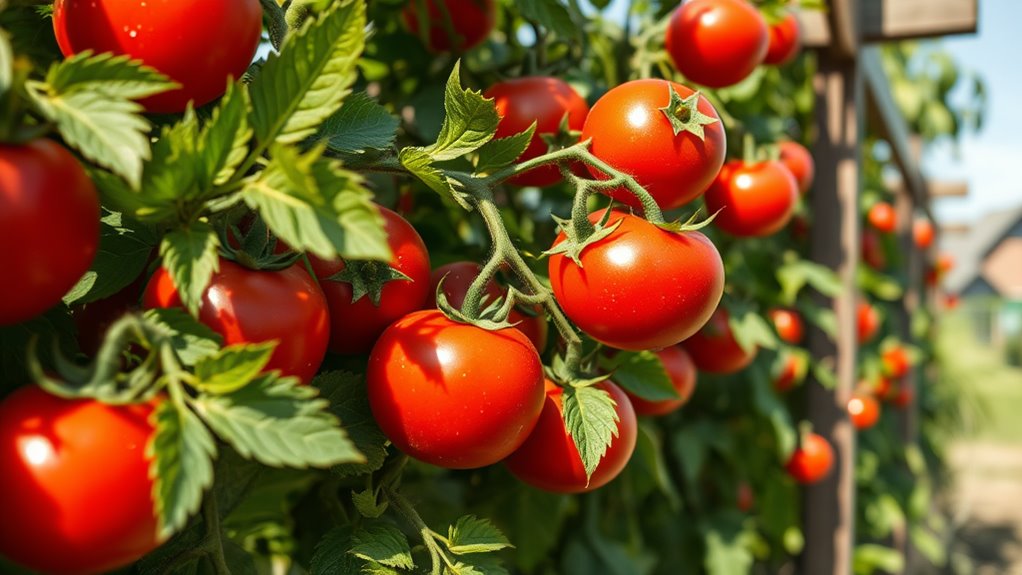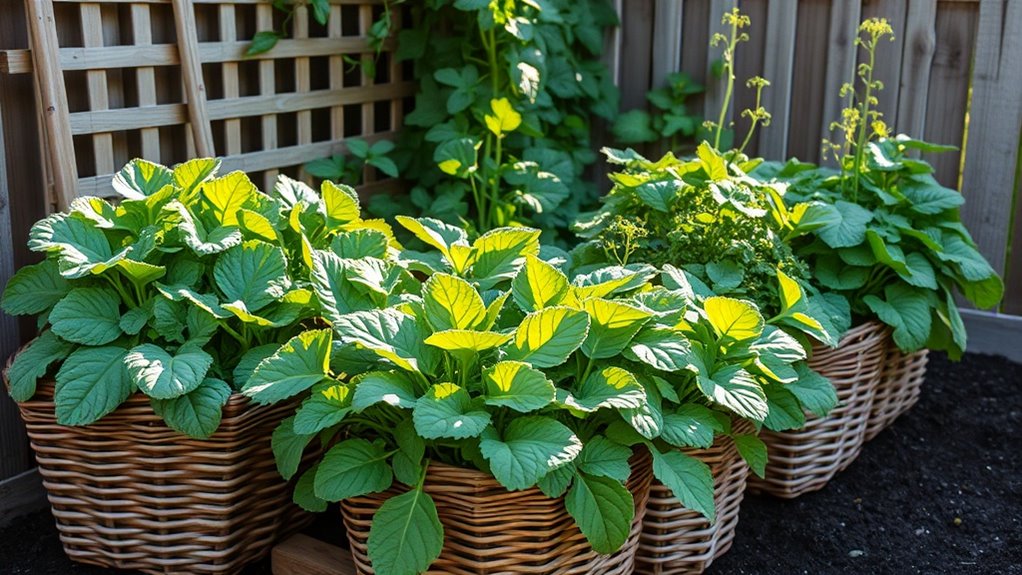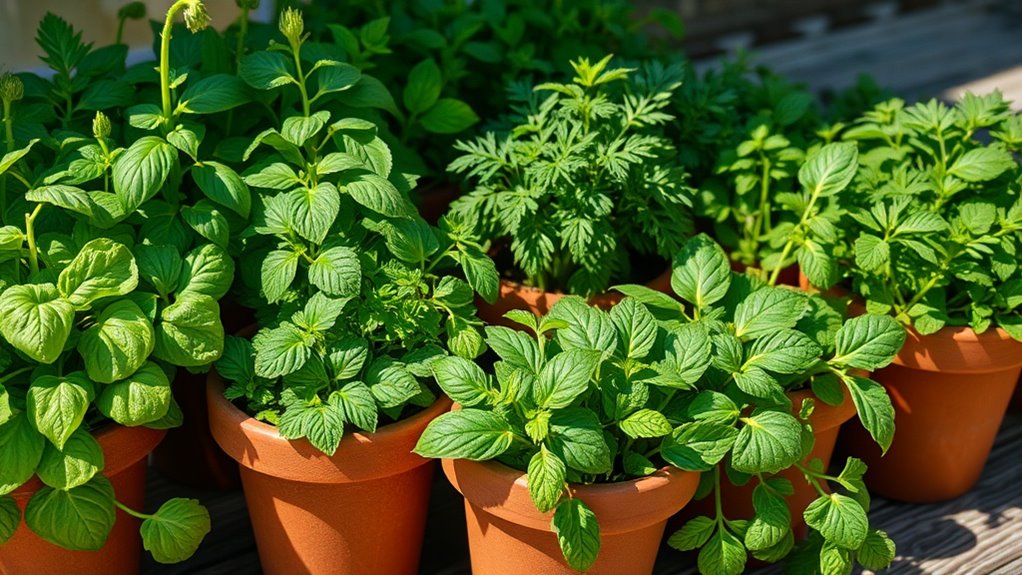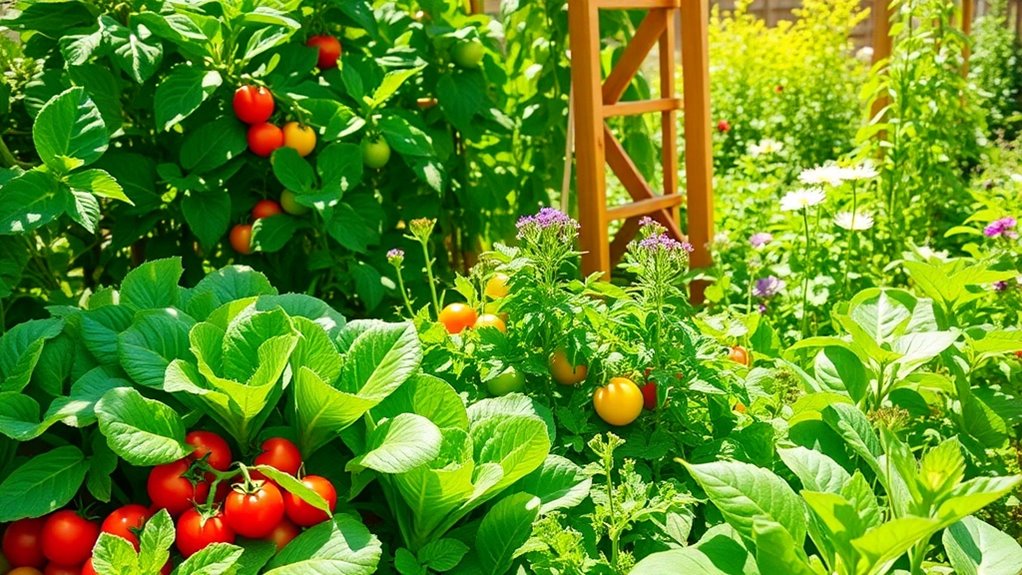Want Juicier Tomatoes. Start Doing This One Thing Today
If you want to grow tomatoes that burst with flavor, it all starts with your watering technique. Many gardeners overlook the impact of deep, infrequent watering on fruit quality. By adjusting your approach, you can enhance the sugars and acids that make tomatoes taste incredible. But it’s not just about watering—understanding your plants’ needs and soil quality is equally crucial. Let’s explore how you can master these elements for optimal results.
Key Takeaways
- Ensure your tomato plants receive at least six to eight hours of direct sunlight daily for optimal flavor development.
- Water deeply but infrequently, aiming for 1-1.5 inches of water per week to promote robust root systems.
- Incorporate organic compost into the soil to enhance nutrient content and improve moisture retention for juicier tomatoes.
- Prune excess foliage to improve air circulation and focus the plant’s energy on fruit production.
- Select heirloom tomato varieties known for their rich flavor to enhance overall taste and juiciness.
Understanding Tomato Plant Needs
How can you ensure your tomato plants thrive and produce juicy fruits?
Understanding tomato plant needs is crucial for juicy tomato growing.
These plants require at least six to eight hours of direct sunlight daily, so choose a sunny spot in your garden.
Water your tomatoes consistently, aiming for deep, even moisture without waterlogging the roots.
They also crave nutrients, especially nitrogen, phosphorus, and potassium, so consider a balanced fertilizer.
Regular pruning helps improve air circulation and focuses energy on fruit production. For optimal results, optimize watering practices to enhance the juiciness of your tomatoes.
The Importance of Soil Quality
Soil quality plays a pivotal role in the success of your tomato plants and their ability to produce juicy fruits.
Healthy soil is rich in organic matter, nutrients, and beneficial microorganisms, which directly influence plant growth and fruit flavor.
Aim for well-draining soil with a balanced pH between 6.0 and 6.8 to optimize nutrient uptake.
Incorporating compost can improve soil structure, enhance moisture retention, and provide essential nutrients.
Regular soil testing helps identify deficiencies, allowing you to amend accordingly. Additionally, simple methods can help you evaluate your garden soil’s health without the need for a testing kit.
How to Optimize Watering Practices
When should you water your tomato plants for optimal growth and juiciness?
Water deeply but infrequently, ensuring moisture reaches the roots.
Aim for about 1-1.5 inches of water per week, adjusting based on weather conditions.
Early morning is the best time to water, allowing leaves to dry before evening, which helps prevent disease.
Use drip irrigation or soaker hoses to minimize evaporation and target the root zone directly.
Monitor soil moisture regularly; when the top inch feels dry, it’s time to water.
Consistency is key—irregular watering can lead to stress, impacting fruit quality and flavor.
In addition, optimal watering practices can significantly improve your tomato plants’ overall health and yield.
Your tomatoes will thank you!
Timing Your Watering Schedule
To maximize the juiciness of your tomatoes, you need to focus on timing your watering schedule effectively. Watering early in the morning minimizes evaporation and ensures your plants absorb moisture before the heat of the day sets in. Additionally, ideal watering practices can help maintain consistent soil moisture, which is crucial for producing plump, flavorful tomatoes.
Best Time to Water
Have you ever wondered what time of day is best for watering your tomato plants? The answer lies in the early morning.
Watering at dawn allows your plants to absorb moisture before the sun intensifies, reducing evaporation and ensuring deeper root penetration.
This timing also helps prevent fungal diseases, as foliage dries out quickly.
If mornings aren’t feasible, aim for late afternoon, but avoid evening watering to prevent overnight dampness, which can foster disease.
By strategically timing your watering, you’ll optimize moisture retention and promote healthier, juicier tomatoes.
Frequency of Watering
How often should you water your tomato plants to ensure they thrive?
Ideally, you should water them deeply once or twice a week, depending on your climate and soil type.
This frequency encourages roots to grow deeper, enhancing your plants’ resilience.
If your area experiences high temperatures or strong winds, you may need to adjust your schedule to maintain consistent moisture.
Remember, the goal is to keep the soil evenly moist but not soggy.
Paying attention to your plants’ growth will help you refine your watering routine, ultimately leading to juicier, tastier tomatoes that you can enjoy.
Soil Moisture Monitoring
Monitoring soil moisture is vital for timing your watering schedule effectively.
By using a moisture meter or simply checking the soil with your fingers, you can gauge when your tomatoes need water.
Aim for consistent moisture without waterlogging; overly dry or saturated soil can stunt growth and diminish flavor.
Water your plants early in the morning or late in the afternoon to reduce evaporation.
Remember, deep, infrequent watering encourages robust root systems.
Keeping a close eye on soil moisture not only optimizes your watering schedule but also results in healthier plants and, ultimately, juicier tomatoes.
Your diligence pays off!
Nutrients That Enhance Juiciness
While growing tomatoes, understanding the nutrients that enhance juiciness can transform your gardening results.
Key players like potassium and phosphorus boost fruit size and flavor.
Potassium regulates water uptake, leading to plumper tomatoes, while phosphorus supports root development, allowing plants to absorb more nutrients.
Don’t forget calcium; it prevents blossom end rot, ensuring your fruits stay healthy and succulent.
Additionally, magnesium plays a crucial role in photosynthesis, enhancing overall plant vigor and fruit quality. Implementing proper soil preparation techniques can further improve nutrient availability and lead to even juicier tomatoes.
Signs of Overwatering and Underwatering
Recognizing the signs of overwatering and underwatering is crucial for growing juicy tomatoes.
When you notice yellowing leaves or wilting stems, it’s time to assess your watering habits.
Both extremes can dramatically impact the flavor and texture of your tomatoes, so let’s explore how to keep your plants thriving. One way to determine if you are overwatering is to check for signs of overwatering such as root rot and mushy stems.
Symptoms of Overwatering
Overwatering can silently sabotage your tomato plants, leading to a host of problems that affect their health and fruit production. Recognizing the symptoms early is crucial for recovery.
| Symptoms | Visual Indicators | Consequences |
|---|---|---|
| Yellowing leaves | Leaves turn pale yellow | Reduced photosynthesis |
| Wilting despite moisture | Droopy leaves | Stunted growth |
| Root rot | Dark, mushy roots | Increased susceptibility to diseases |
| Mold or fungus | White or gray patches | Compromised fruit quality |
Pay attention to these signs, and adjust your watering routine to ensure your tomatoes thrive.
Signs of Underwatering
When your tomato plants don’t receive enough water, they exhibit distinct signs that can quickly escalate into serious issues.
You might notice wilting leaves, which appear droopy and lack vitality. The leaf edges may turn brown or crispy, signaling stress. Additionally, yellowing foliage is a clear indicator of underwatering, as the plant struggles to maintain its vital processes. You may also see stunted growth and fewer blossoms, impacting your harvest.
If you check the soil and find it dry several inches down, it’s time to water. Prompt action can help your tomatoes thrive and produce that juicy flavor you crave.
Impact on Tomato Flavor
Watering practices significantly influence the flavor profile of your tomatoes.
Overwatering dilutes essential sugars and acids, leading to bland, watery fruit. You’ll notice your tomatoes lack that vibrant taste you crave.
Conversely, underwatering stresses your plants, causing them to produce smaller, less flavorful tomatoes. Signs of underwatering include wilting and shriveled leaves, but don’t wait for these indicators.
Aim for consistent moisture without saturation.
A balanced watering regimen helps develop rich flavors and enhances sweetness.
Additional Tips for Growing Flavorful Tomatoes
How can you ensure your tomatoes burst with flavor? Start by selecting heirloom varieties known for their rich taste.
Provide consistent watering, aiming for deep, infrequent irrigation to encourage root development.
Enhance soil quality with organic compost, ensuring it’s nutrient-rich and well-draining.
Prune excess foliage to improve air circulation and redirect energy to fruit production.
Use mulch to retain moisture and regulate soil temperature.
Lastly, consider companion planting with basil, which can boost flavor. Additionally, pairing tomatoes with companion plants like marigolds can help deter pests and improve overall plant health.





